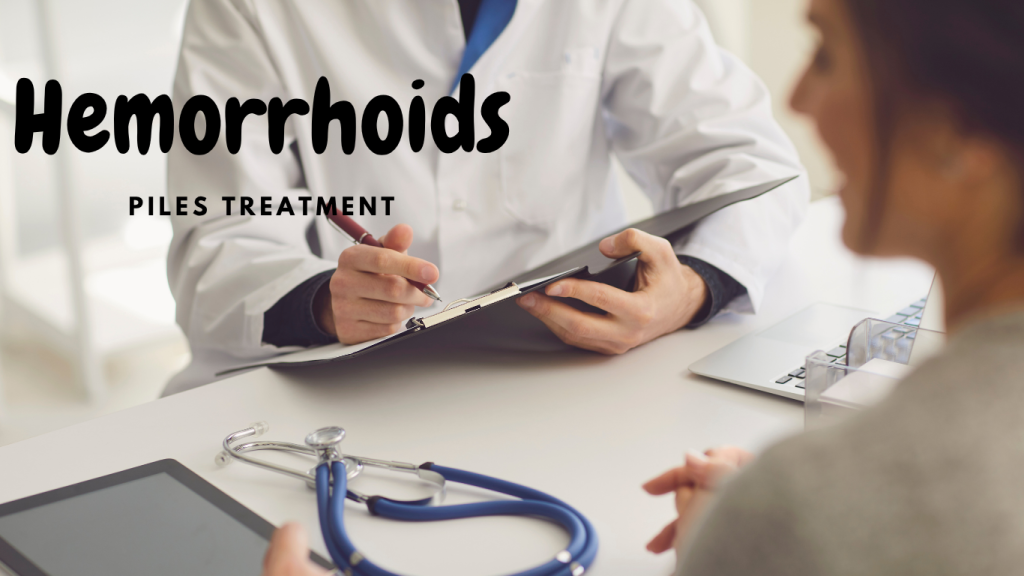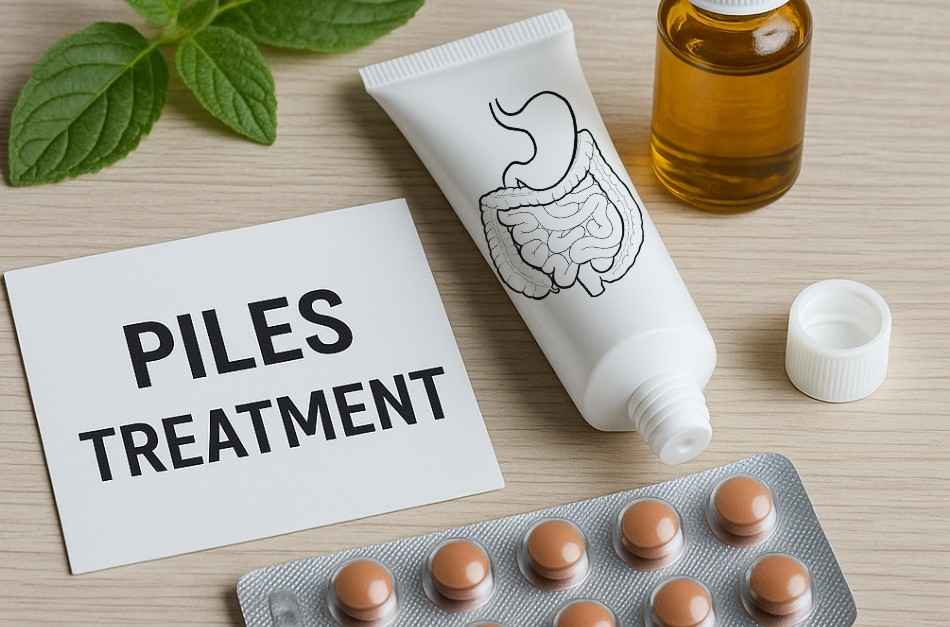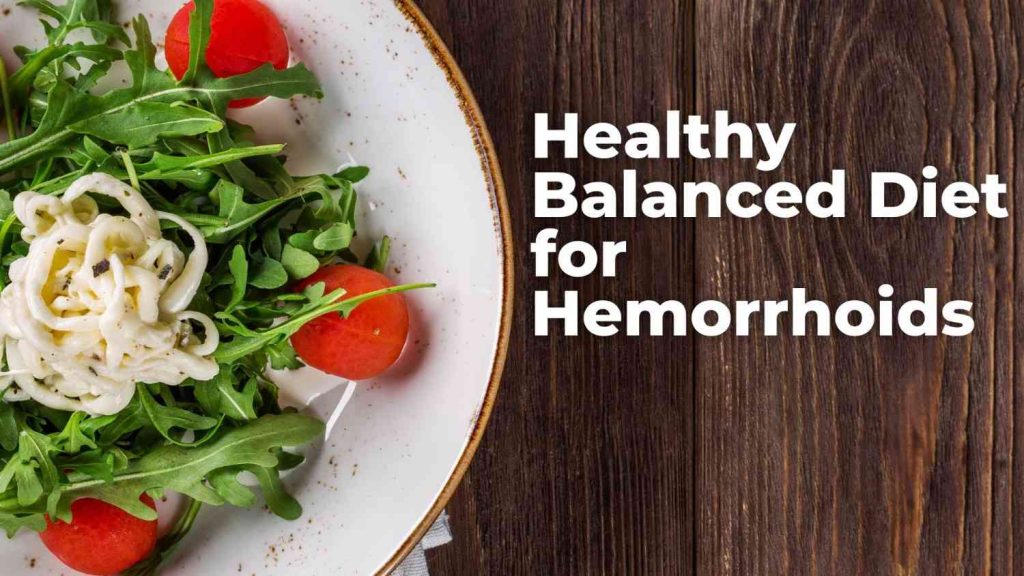Piles, also known as hemorrhoids, is a common problem affecting millions of people around the world. Piles are known as “Arsh” in Ayurveda. It is a condition that develops in the form of lumps inside the anus and outside the rectum.
The lumps are swollen and enlarged veins. It is painful and uncomfortable, but can be treated with natural methods. Many people feel embarrassed to disclose this condition.
Ayurveda, the ancient Indian system of medicine, offers safe and long-lasting solutions to cure piles from the root.
In this article, we will discuss everything you need to know about piles – its causes, types, Ayurvedic treatment, home remedies and diet. If you are looking for a complete Ayurvedic way to get rid of piles, keep reading.

What is Piles (Hemorrhoids)
Piles are swollen and inflamed veins in the rectum and anus. They can occur inside the rectum (internal piles) or outside the anus (external piles). Piles can cause pain, itching, bleeding during bowel movements, and discomfort when sitting.
In Ayurveda, piles are considered to be caused due to imbalance in the three doshas – Vata, Pitta, and Kapha. Poor digestion, constipation, and a sedentary lifestyle are the main factors.
They develop when excessive pressure causes veins to stretch, bulge, or rupture. Depending on their location, they are classified as.
Types of Piles
In Ayurveda, piles (Hemorrhoids) are classified based on their appearance, symptoms, and underlying dosha imbalance.
✅ Internal hemorrhoids :- Located inside the rectum, often painless but can cause bleeding.
✅ External hemorrhoids :- These form under the skin around the anus, causing discomfort like pain, swelling.
✅ Prolapsed hemorrhoids :- This serious problem is internal hemorrhoids that protrude outside the anus.
Piles (Hemorrhoids) are called Arsha in Ayurveda. Poor digestion, chronic constipation and unhealthy habits aggravate these doshas, leading to inflammation and swelling.
Why Does Piles Happen
Understanding the root causes helps prevent and manage piles effectively.
1. Dehydration :- Low water intake hardens stools, worsening constipation.
2. Chronic Constipation :- One of the most common causes. When you strain too much while passing stool, it puts pressure on veins in the rectum.
3. Sedentary Lifestyle :- Lack of exercise weakens digestive fire (Agni) and slows metabolism.
4. Pregnancy :- Pressure from the uterus and hormonal changes contribute to swollen veins.
5. Poor Diet :- Excess spicy, oily, or processed foods disrupt digestion.
6. Obesity :- Excess weight strains pelvic blood vessels.
7. Genetic Factors :- Weak vein walls can be hereditary.
8. Liver Problems :- Liver diseases like cirrhosis can also lead to piles due to increased blood pressure in veins.
Ayurveda emphasizes that improper eating habits (overeating, irregular meals) and suppressing natural urges (delaying bathroom visits) directly aggravate Vata and Pitta, leading to piles (Hemorrhoids).
Types of Piles in Ayurveda
Ayurveda categorizes piles based on dominant doshas
1. Vataja Arsha :- Caused by aggravated Vata. Symptoms include dry, hard stools, severe pain, and constipation.
2. Pittaja Arsha :- Linked to excess Pitta. Symptoms include bleeding, burning sensation, and inflammation.
3. Kaphaja Arsha :- Due to Kapha imbalance. Characterized by large, mucus-covered hemorrhoids and sluggish digestion.
4. Tridoshic Arsha :- A combination of all three doshas, requiring a balanced treatment approach.
Ayurvedic Panchakarma Treatments for Piles
Some of the main medical systems of Ayurveda are as follows
1. Abhyanga (Oil Massage) :- Massaging the abdomen with castor or coconut oil improves digestion and relieves constipation.
2. Virechana (Therapeutic Purgation):- Clears excess Pitta and toxins from the liver and intestines using herbal laxatives.
3. Basti (Medicated Enema) :- Cleanses the colon, reduces inflammation, and strengthens rectal tissues. Herbal decoctions like Dashamoola or oils like Sesame are used.
4. Kshara Sutra Therapy :- A specialized thread coated with herbal alkali (Kshara) is tied around the hemorrhoid. It cuts off blood supply, shrinks the pile mass, and promotes healing.
5. Sitz Bath with Herbs :- Soaking the pelvic area in warm water infused with neem, turmeric, or triphala reduces swelling and pain.
Note :- Panchakarma must be performed under an Ayurvedic practitioner’s supervision.

Home Remedies for Piles (Hemorrhoids)
Triphala Churna :- Mix 1 tsp of triphala powder in warm water before bedtime to regulate bowel movements.
Aloe Vera Gel :- Apply fresh aloe vera gel externally to soothe itching and inflammation.
Radish Juice :- Drink 50ml of radish juice daily to reduce bleeding piles.
Buttermilk with Rock Salt :- Drink buttermilk with a pinch of rock salt after meals to boost digestion.
Warm Sesame Oil Compress :- Apply warm sesame oil to the affected area to relieve pain.
Raktamokshana (Bloodletting) :- Removes excess Pitta (heat) and toxins from the body.
These therapies are performed under the supervision of trained Ayurvedic doctors.
Haritaki :- One of the best herbs for constipation. Clears bowels gently.
What to Eat and What to Avoid
Foods to Eat
Hydrating Foods :- Cucumber, watermelon, and coconut water.
Ghee or Olive Oil :- Lubricates intestines and eases stool passage.
High-Fiber Foods :- Whole grains, oats, leafy greens, and fruits like papaya and figs.
Herbal Teas :- Ginger, cumin, or fennel tea to enhance digestion.

Foods to Avoid
✅ Spicy, fried, or processed foods.
✅ Red meat, alcohol, and caffeine.
✅ Dairy products (except buttermilk).
✅ Carbonated drinks and ice-cold foods.
Sample Diet Plan
Breakfast :- Oatmeal with stewed apples.
Lunch :- Khichdi (rice and mung dal) with steamed vegetables.
Dinner :- Roti (whole wheat bread) with spinach curry.
Precautions and Lifestyle Tips
✅ Avoid sitting for prolonged periods; take short walks.
✅ Practice yoga poses like Pavanamuktasana (wind-relieving pose) and Malasana (squat pose).
✅ Never suppress the urge to pass stools.
✅ Maintain anal hygiene with warm water after bowel movements.
✅ Stay hydrated (8–10 glasses of water daily).
Conclusion
Piles (Hemorrhoids) may be painful and uncomfortable, but Ayurveda offers gentle, effective, and permanent solutions. From Panchakarma therapies to home remedies and proper diet, Ayurveda treats the root cause, not just the symptoms.
If you are suffering from piles (Hemorrhoids), try Ayurvedic treatment under expert guidance and follow the lifestyle and food habits mentioned above. These simple changes can bring great relief and help you live a pain-free life.
Piles (Hemorrhoids) need not be a lifelong struggle. Ayurveda offers a holistic path to healing by balancing doshas, improving digestion, and promoting detoxification. With Panchakarma therapies, simple home remedies, and mindful eating, you can overcome piles naturally.
Remember, consistency is key—follow Ayurvedic principles diligently and consult a qualified practitioner for personalized care.